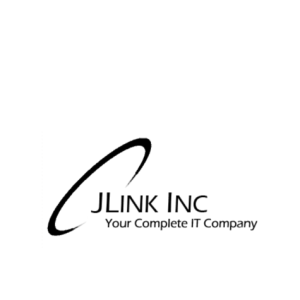In Bloomsburg, where the modern lifestyle meets rural charm, the demand for reliable internet service is more critical than ever. As the world becomes increasingly digital, residents and businesses alike depend on fast and stable internet connections to meet their daily needs, from online schooling and remote work to entertainment and personal communications. In Bloomsburg, the choice between internet services boils down to two main options: the cutting-edge Bloomsburg Fiber provided by JLink and the traditional broadband solutions like DSL, cable, and satellite.
Bloomsburg Fiber, with its promise of high-speed fiber-optic technology, offers a glimpse into the future of internet connectivity. This service starkly contrasts traditional broadband, which has been the backbone of internet access in many rural areas but often needs help with speed and reliability issues. Understanding these options’ nuances will help Bloomsburg’s residents and business owners make informed decisions that best suit their internet needs and lifestyles. This introduction sets the stage for a deeper exploration into how Bloomsburg Fiber from JLink compares to traditional broadband solutions, highlighting the technological advancements and practical implications for users in the region.
What is Bloomsburg Fiber from JLink?
Bloomsburg Fiber from JLink represents a significant technological advancement in internet connectivity for the residents and businesses of Bloomsburg. This service utilizes fiber-optic technology, which is fundamentally different and more advanced than traditional broadband methods such as DSL, cable, and satellite.
Technology Behind Bloomsburg Fiber
Fiber-optic technology uses thin strands of glass or plastic, known as fiber, to transmit data as light signals. This method allows for much faster data speeds and higher bandwidth than conventional copper cables’ electrical signals. One of the most significant advantages of fiber-optic internet is its ability to provide symmetrical upload and download speeds, which is crucial for activities like video conferencing, online gaming, and uploading large files to the cloud.
Fiber optics are less susceptible to interference from electromagnetic noise, which can affect copper cable transmissions. This characteristic ensures that fiber-optic connections offer more reliable and stable internet service. Furthermore, fiber-optic cables have a much longer lifespan and are less prone to degradation over time than copper cables.
JLink's Implementation in Bloomsburg
JLink has tailored its Bloomsburg Fiber offerings to meet the specific needs of its community, ensuring that both residential and commercial users can benefit from this next-generation technology. JLink provides various plans, ranging from basic speeds suitable for average households to ultra-fast gigabit connections for heavy data users and businesses. This deployment enhances individual user experiences and supports local businesses in becoming more competitive in a digital economy.
The introduction of Bloomsburg Fiber by JLink has marked a pivotal shift in how the community accesses and utilizes the internet. It has set a new standard for connectivity in rural areas and positioned Bloomsburg as a connected and forward-thinking town.
Understanding Traditional Broadband
Traditional broadband encompasses a variety of older internet technologies that have been the backbone of online connectivity in many regions, including DSL, cable, and satellite. These technologies have played a pivotal role in providing internet access to areas before the widespread availability of fiber-optic solutions.
Types of Traditional Broadband
1. DSL (Digital Subscriber Line): DSL utilizes existing telephone lines to provide internet connectivity. While it is widely available, DSL internet speed depends heavily on the distance from the provider’s facilities; the further the distance, the weaker and slower the connection becomes.
2. Cable Broadband: This type uses the same coaxial cable lines that deliver cable television to provide internet access. Cable internet is typically faster than DSL, offering higher download speeds. However, its performance can suffer from network congestion during peak usage times, as it shares bandwidth with other users in the area.
3. Satellite: Satellite internet is vital in rural and remote areas where other forms of broadband are not feasible. It uses a satellite dish to send and receive data from a satellite in orbit. While it reaches most locations, its speeds are generally lower, and the connection has higher latency, significantly affecting real-time online activities like gaming or video conferencing.
Limitations of Traditional Broadband
Traditional broadband systems face several challenges that can impact user experience:
– Slower Speeds: Generally, traditional broadband offers slower speeds compared to fiber-optic technology, particularly when it comes to upload speeds, which are crucial for sending large files or live streaming.
– Susceptibility to Weather and Infrastructure: DSL and satellite services, in particular, can be affected by environmental conditions. For example, satellite internet is susceptible to disruptions during bad weather, while DSL’s performance can degrade over old or poorly maintained copper lines.
– Bandwidth Throttling: Many traditional broadband providers enforce bandwidth caps or throttle speeds during high-usage periods to manage traffic, which can hinder performance and frustrate users, especially in households or businesses where high bandwidth usage is common.
These limitations underscore the growing gap between traditional broadband and more modern technologies like fiber-optic internet, which offers more reliability, faster speeds, and better overall service. For residents and businesses in Bloomsburg, understanding these differences is crucial when considering an upgrade to a more robust and future-proof internet solution like Bloomsburg Fiber from JLink.
Performance Comparison: Bloomsburg Fiber vs. Traditional Broadband

Performance, which encompasses speed and reliability, is a paramount concern when choosing an internet service. In Bloomsburg, residents and businesses comparing Bloomsburg Fiber from JLink to traditional broadband options like DSL, cable, and satellite will find significant differences in these areas.
Speed
Bloomsburg Fiber from JLink offers a range of plans, including speeds from 100 Mbps to 1 Gbps. This is a stark contrast to traditional broadband:
– DSL: Speeds can vary widely but typically top out at around 25-100 Mbps, and these speeds decrease as the distance from the service provider increases.
– Cable: While faster than DSL, offering speeds up to 300-400 Mbps, cable internet suffers from bandwidth congestion. During peak hours, users might notice a slowdown in speed as more people in the neighborhood use the service.
– Satellite: This service provides speeds up to 25-100 Mbps, but with significant latency issues that can affect the performance of real-time online activities.
Reliability
The reliability of an internet connection can be just as important as speed, especially for applications that require a constant and consistent connection:
-Fiber-optic technology, such as that used by Bloomsburg Fiber from JLink, is inherently more reliable. Unlike copper or coaxial cables used in DSL and cable systems, it is less susceptible to interference and signal degradation over long distances.
– DSL and Cable connections can be disrupted by physical conditions such as poor weather, infrastructure wear, and electromagnetic interference from nearby power lines.
– Satellite internet experiences disruptions due to weather conditions like rain and snow, which can block the signal transmission to and from the orbiting satellite.
Overall, Bloomsburg Fiber provides superior speed and reliability compared to traditional broadband. The fiber-optic connection ensures that data transmission is not only faster but also more consistent, making it an ideal choice for high-demand internet users and businesses that rely on robust internet connectivity. For those in Bloomsburg considering an upgrade or looking for new internet service, the performance metrics heavily favor Bloomsburg Fiber, especially where the need for uninterrupted service and high speeds are critical.
Throughout this analysis, the advantages of Bloomsburg Fiber over traditional broadband have become evident. Bloomsburg Fiber, provided by JLink, offers superior speed, reliability, and technological advancement. Unlike traditional broadband, which often suffers from speed inconsistencies and reliability issues due to older infrastructure, Bloomsburg Fiber utilizes cutting-edge fiber-optic technology to deliver consistent, high-speed internet services. This technology not only supports the increasing demands of modern internet usage but also ensures scalability and future-proofing for advancements in digital technologies.
The choice is clear for residents and businesses in Bloomsburg considering an upgrade or initial internet setup. Investing in Bloomsburg Fiber from JLink means opting for an internet service that can keep pace with technological advancements and provide dependable, high-speed connectivity that modern lifestyles and businesses require.

